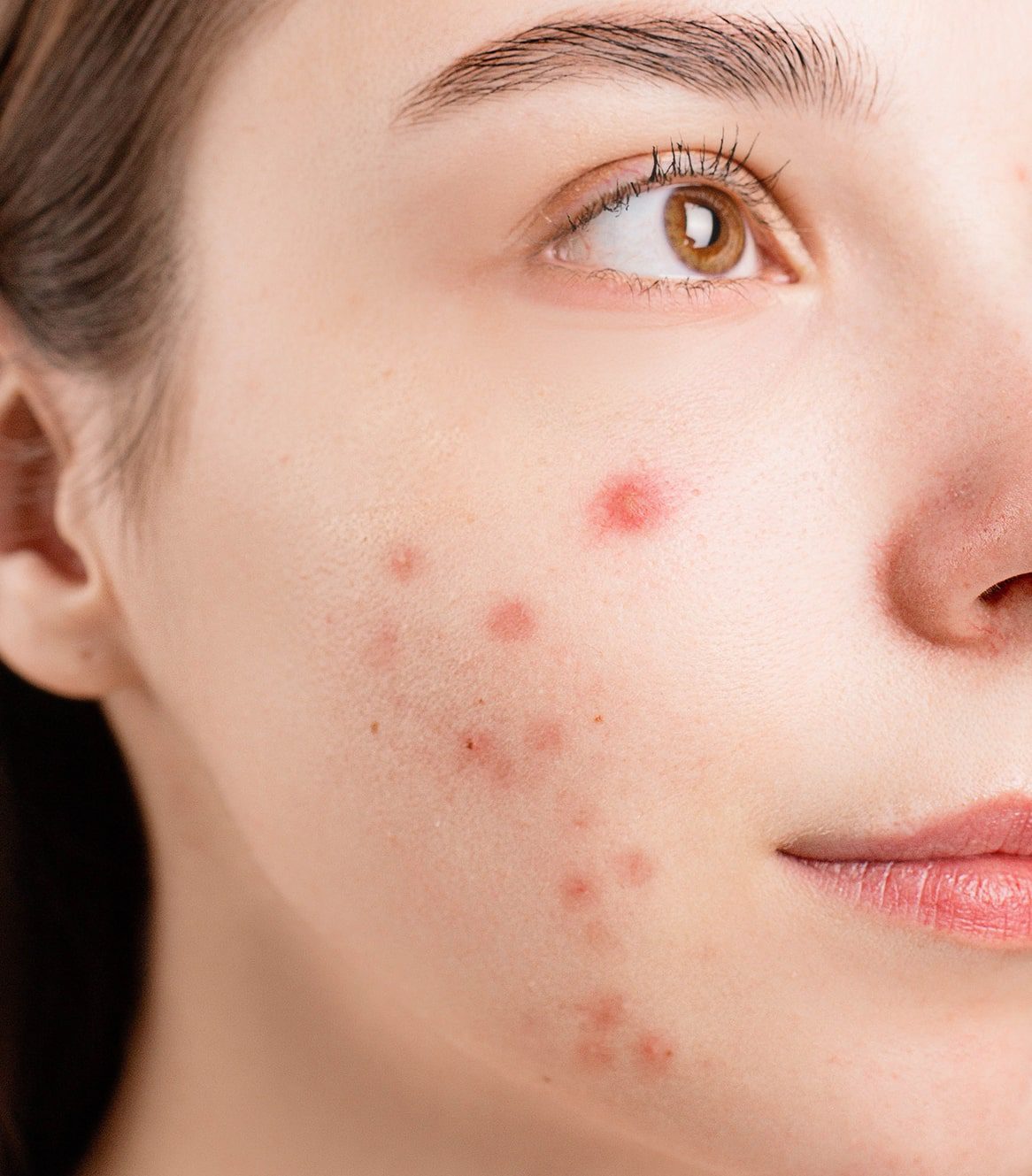The Lowdown on Acne

While acne, blackheads and cysts are categorised as acne, there are seven types in totals For an effective treatment, you need to understand from which type of acne you are suffering. Once you identify the acne type, treating it is as easy as A, B, C!
Whiteheads are non-inflammatory but are one of most typical forms of acne, caused by a pore becoming clogged with a mix of dead skin cells and sebum. This clogged pore gets covered by a layer of skin and develops pus within, which gives the whitehead its white appearance. To treat whiteheads, ingredients like witch hazel can be a good option.
Blackheads are also caused by clogged pores but unlike whiteheads, the clogs of oil and skin cells are open to the air and change colour when they come into contact with oxygen. A professional extraction is one way to deal with blackheads and can be a fantastic way to kick off your cleansing journey but the only really effective method of dealing with these is to have a skincare regime tailored to your skin type in place.
Papules are the swollen red bumps that so many of us associate with “typical” breakouts and they develop when excess oil and dead skin cells clog your pores. Pressure builds up in the blocked pore and can cause the walls of your pore to rupture, affecting the surrounding skin. When your immune system responds to the rupture with inflammation the papules adopt their red and swollen appearance. Prevention of these can be done by ensuring you have a good balance of cleansing and exfoliation.
Pustules are essentially papules that fill with pus when your immune system kicks in. The red bumps develop a swollen white or yellow cap, giving pustules that classic pimple look. Anti-inflammatory botanicals like cucumber, rosewater, and camellia will calm the inflammation.
Nodules look similar to papules but start deeper within the layers of your skin. They never have a “head” like whiteheads or pustules but feel firm and are painful to touch. In such as cases, prevention is much easier than cure so a balanced skincare routine is a must.
Cysts resemble deep, red lumps and are very tender and painful. A particularly stubborn form of breakout, cysts or cystic acne can, unfortunately, last for months. A common misconception is that cysts are caused by poor hygiene, but it is simply a myth. The only effective way to really treat cysts is to follow a nourishing skincare routine designed for acne-prone skin. This should prevent future breakouts.
Not technically acne, milia are caused by trapped skin flakes or keratin deposits but milia usually disappear on their own after a few months.
Whichever acne type you have, you should never pick at it.
Instead make an appointment with a skincare expert so they can assess your skin including any blemishes and acne and recommend a course of treatment to address it and minimise future breakouts and scarring. In many instances, acne
often require prescribed products which are able to make a cellular change in the skin. But for those whose acne doesn’t warrant a prescription, there are fantastic ‘active’ ingredients. Brands such Obagi Medical and ZO Skin Health which were created by dermatologists who specialise in the skin have extremely effective products with the correct number of actives in well-designed formulations to keep breakouts at bay.
